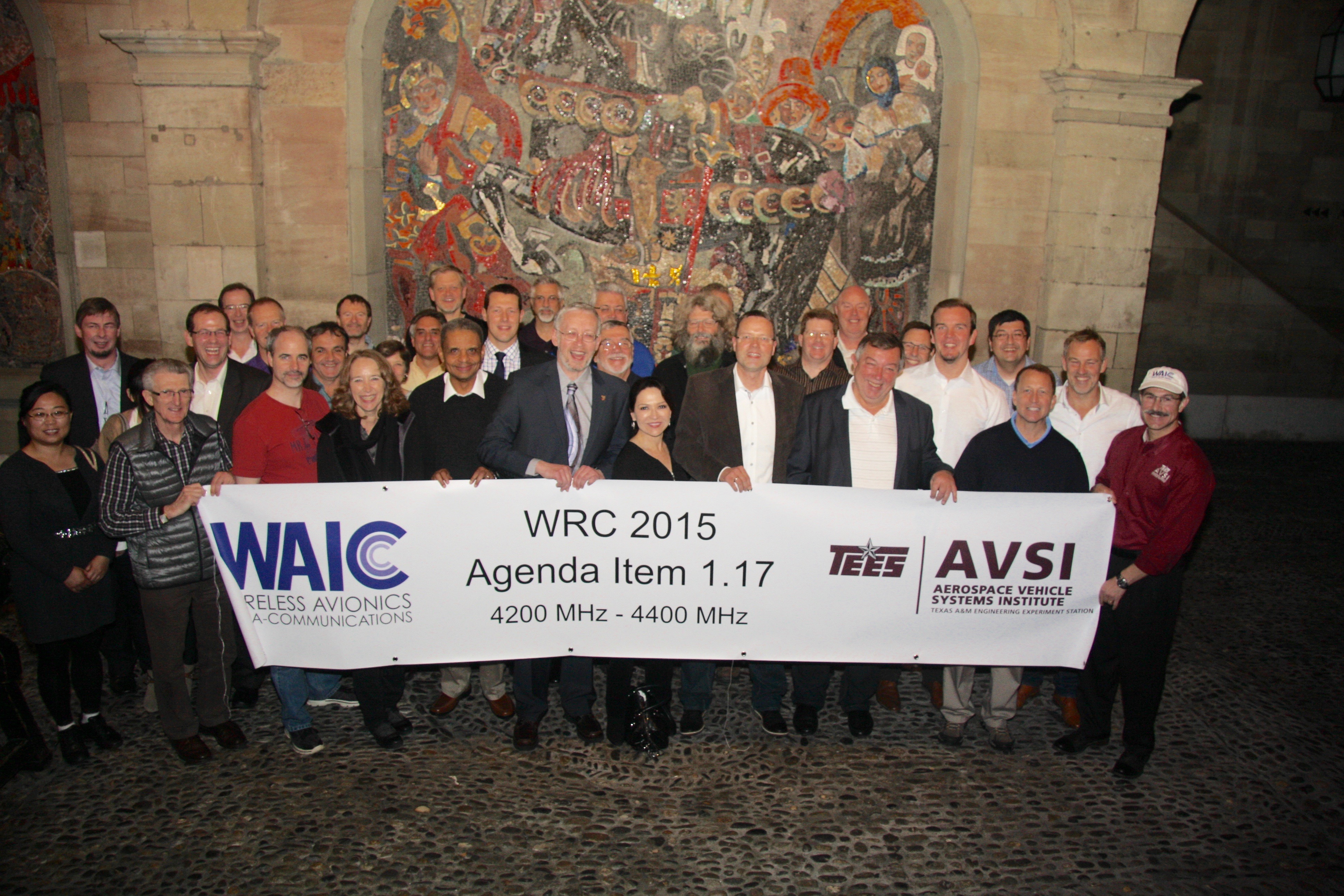
The Aerospace Vehicle Systems Institute (AVSI), a center in the Department of Aerospace Engineering at Texas A&M University, successfully achieved a worldwide radio frequency spectrum allocation for wireless avionics at the 2015 World Radio communication Conference (WRC-15), held in Geneva, Switzerland.
Seven years of effort by members of the AVSI Wireless Avionics Intra-Communications (WAIC) project team culminated in the decision by the conference that will positively impact future aircraft systems design by allowing sensors, actuators and other critical aircraft functions to be integrated wirelessly.
“The complexity of aircraft is growing exponentially, due in large part to the increasing use of software-intensive systems to add functionality that improves performance and safety,” said Dr. David Redman, director of AVSI. “Integrating these systems currently relies on miles of redundant wiring that adds significant weight and increases the complexity of manufacturing these aircraft. Wireless interconnection is an alternative that addresses the complexity of aircraft wiring.”
Until now, the use of wireless communications for onboard safety-related aircraft functions was impossible because international regulations did not permit this use. A group of aerospace industry stakeholders determined in 2007 that these international regulations needed to be changed to achieve the benefits of wireless interconnectivity. They recognized this was an eight-year process through the International Telecommunications Union (ITU), the United Nations specialized agency coordinating the global shared use of the radio frequency spectrum, since it hosted the WRC once every four years. The group further recognized that AVSI was uniquely positioned to quickly organize a cooperative effort between international industry, government and academic stakeholders to support promotion of WAIC through the ITU process.
The AVSI WAIC Team included researchers from Airbus, Boeing, Embraer, Honeywell and United Technologies Aerospace Systems with support from BAE Systems, Bombardier, GE Aviation, Gulfstream and Texas A&M. Team members performed the necessary studies and provided input contributions to the relevant regulatory bodies to support the preparatory efforts for WRC-15. The combined efforts led to strong global support for the WAIC proposal by ITU member administrations. The WAIC proposal was one of the first issues approved by the conference, demonstrating the excellent preparation by the AVSI Team to achieve technical consensus while protecting and optimizing existing aviation radio frequency spectrum usage.
The decision by WRC-15 clears the way for developing the necessary aeronautical standards to support the airworthiness certification process for the first WAIC-enabled aircraft systems. The AVSI WAIC team continues its work to support the development of such standards and to define technical details in order to accelerate the development of WAIC systems and the availability of the benefits of onboard wireless communications.
The decision also opens opportunities for researchers at Texas A&M to pioneer new WAIC technologies and applications. Proposals for WAIC applications in propulsion and flight control are being considered in the aerospace engineering department and for WAIC protocol development and testing in the electrical and computer engineering department.
“This project really illustrates how AVSI can achieve global impact by delivering our mission of addressing issues that impact the aerospace community through international cooperative research and collaboration. It also positions Texas A&M to become a leader in wireless avionics,” said Redman.
For more information about WAIC or AVSI, contact Redman via email at dredman@tamu.edu or visit http://avsi.aero.
